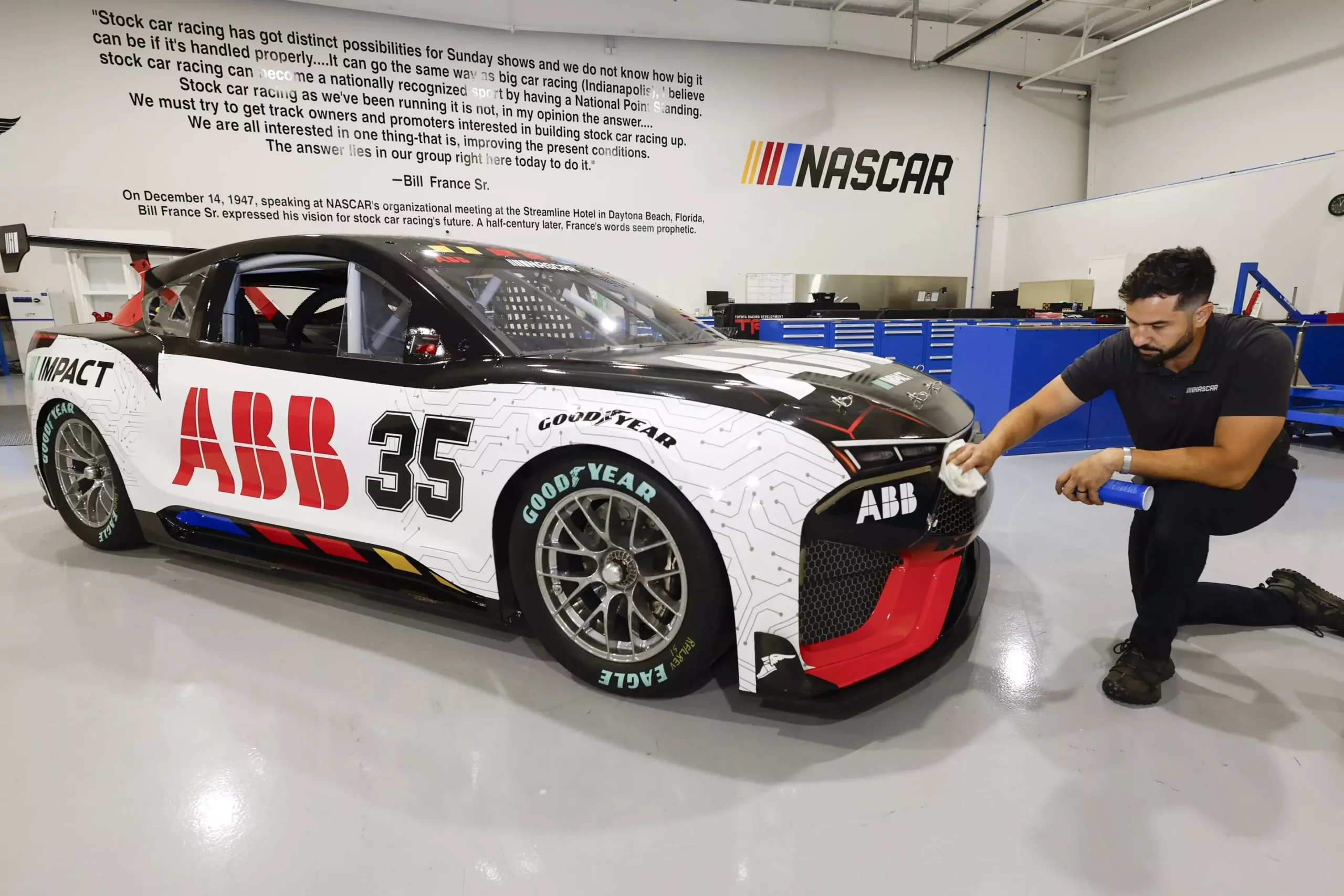The traditional NASCAR experience has always been synonymous with the thunderous roars of powerful gasoline engines, the smell of burning rubber, and the speed at which cars zip past the tracks. However, NASCAR recently unveiled its first-ever electric racecar in downtown Chicago, marking a significant shift in the landscape of motorsports. This groundbreaking move aims to gauge fan interest in electric racing and pave the way for a new era of high-performance electric vehicles on the racetrack.
Unlike its gas-powered counterparts, the electric racecar emits a subtle hum instead of a deafening roar when it starts up. This eco-friendly initiative spearheaded by NASCAR in collaboration with Chevrolet, Ford, Toyota, and ABB seeks to portray electric vehicles as cool, fun, and accessible to a wider audience. Riley Nelson, NASCAR’s head of sustainability, emphasizes the importance of representing electrification in racing and pushing the boundaries of innovation in the industry.
The $1.5 million electric racecar prototype boasts impressive features, with semi-retired NASCAR driver David Ragan being the first to test its capabilities on the tracks. The new electric car, which resembles a crossover utility vehicle, accelerates almost twice as fast as its gas-powered counterparts and offers immediate stopping power. While the electric car’s lap time at Martinsville Speedway was slightly slower due to its weight, Ragan believes that further optimization could result in even faster speeds.
Eric Warren, General Motors’ global motorsports competition head, highlighted the importance of using racing as a platform to educate fans about energy consumption and environmental sustainability. With market research indicating a significant interest in electric vehicles among NASCAR fans, the introduction of electric racing could revolutionize the sport and attract a new generation of environmentally-conscious viewers.
NASCAR’s commitment to sustainability extends beyond electric racing, with plans to introduce sustainable racing fuel, recycle at all events, and transition to 100% renewable electricity at facilities and tracks by 2028. The use of plant-based materials for the electric racecar’s auto body and the installation of electric-vehicle charging stations at NASCAR tracks underscore the sport’s dedication to reducing carbon emissions and promoting eco-friendly practices.
While NASCAR’s foray into electric racing sets a new standard for motorsports, other organizations like Formula E, IMSA, and IndyCar have also embraced electric and hybrid technologies in their competitions. The rising demand for electric vehicles in the consumer market aligns with the growing interest in electric racing, paving the way for more sustainable and innovative solutions in the industry.
As consumer preferences shift towards electric vehicles, NASCAR’s introduction of electric racing signals a monumental shift in the way we perceive and engage with motorsports. The silent hum of electric cars on the track may replace the thunderous roar of traditional engines, but the environmental impact and technological advancements speak volumes about the future of racing. By embracing electrification and sustainability, NASCAR is leading the charge towards a greener, more eco-conscious future for motorsports.


Leave a Reply